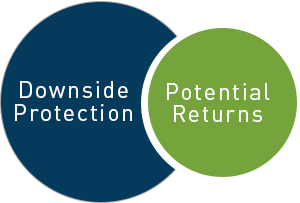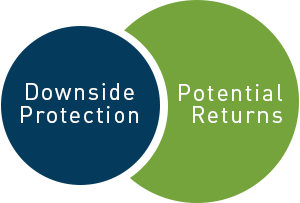
Markets rise and fall daily, even hourly, based on a wide variety of events. In fact, this type of volatility is expected and should be part of one’s long-term investment planning.
However, when larger world events occur and the news is focused on these events and the economic impacts to the global economy, it’s only human to feel a bit nervous about the immediate impacts to your holdings.
It is especially important during these times to stay focused on your long-term goals and objectives. This long-term focus can help you to avoid making emotional decisions and knee-jerk reactions that potentially could have serious negative effects on your long-term investment outcomes.
Long-term Investing Outlasts Short-term Crises
Even the most seasoned investors can find periods of extreme market volatility to be unnerving. However, while past performance is never a guarantee of future results, professional Financial Advisors know that history has shown these periods of extreme market volatility will pass.[1]
The graph below puts market crashes into perspective by zooming out. The performance of the S&P 500 Index is charted over 52 years, from 1970 to 2022. Investors that stayed the course would have earned a 10.4%[2] annual return over this full period, even if they stayed invested through each major market selloff.
Chart 1: Performance of the S&P 500 Index Charted Over 50 Years, 1970-2022

Source: Morningstar
This graph shows the growth of USD 1 invested in U.S. large stocks at the beginning of 1970 and the four major market declines that occurred.
Time in the Market, Not Timing the Market
History also tells us that maximizing time spent invested in the market is often a better investment strategy than timing the market. Timing the market is not only difficult, but trying to do so can be costly to investors. The following table illustrates how missing only a few of the best* days in the market impacts average annual returns over a 20-year period. An investor missing even just the 10 best days finishes with less than half of what the fully invested portfolio earned.
20-Year Daily Returns Ending 6/30/2023
| Period of Investment | Average Annual Return | Growth of Initial Investment of $10,000 |
|---|---|---|
| Fully Vested | 7.5% | $42,168 |
| Miss the 10 Best Days | 3.4% | $19,339 |
| Miss the 20 Best Days | 0.8% | $11,609 |
| Miss the 30 Best Days | -1.4% | $7,628 |
| Miss the 40 Best Days | -3.2% | $5,251 |
Sources: Bloomberg L.P., PNC
*Best is defined as the highest one-day return of the S&P 500 Index. Source: PNC Investment Strategy.
Diversity Smooths Volatility
Market volatility should be seen as the rule of investing, not the exception. It is something that should be planned for, and managed, by holding a diversified portfolio that matches your risk tolerance, timeline and long-term investment goals.
This is why staying the course during periods of market volatility is often the most effective strategy. As shown in the chart below, the best- and worst-performing asset classes typically change from year to year, and trying to guess the best-performing asset class in any given year is practically impossible. A diversified portfolio can take advantage of the best-performing asset classes and provide for more consistent returns. Note that no investment strategy, including diversification, can guarantee positive returns or eliminate potential losses.
Asset Allocation
View our periodic table of historical investment returns
Complements to Diversified Core Holdings
Your financial plan likely includes a variety of investment types designed to help keep your portfolio on track through down markets.
In working with your Financial Advisor, you may want to explore some other tactical solutions depending upon your specific goals, risk profile and time horizon.
These may include:
Downside Protection & Steady Income Solutions – Annuities
Annuities can help protect asset growth and provide consistent income. Some can even provide an opportunity for growth linked to an index with downside protection, should that index decline. Living benefit riders can also be added to some annuities to provide steady lifetime income regardless of the market value of the account.
Adding a Safety Net Using Buffers & Floors – Structured Notes
Structured notes provide flexibility on the choice of underlying index selection and the size of the buffer. A larger buffer provides more downside protection in exchange for lower potential returns. Smaller buffers provide less downside protection in exchange for higher participation in index returns.
Large buffer (more downside protection) in exchange for lower potential
Smaller buffer (less downside protection) in exchange for more potential upside




